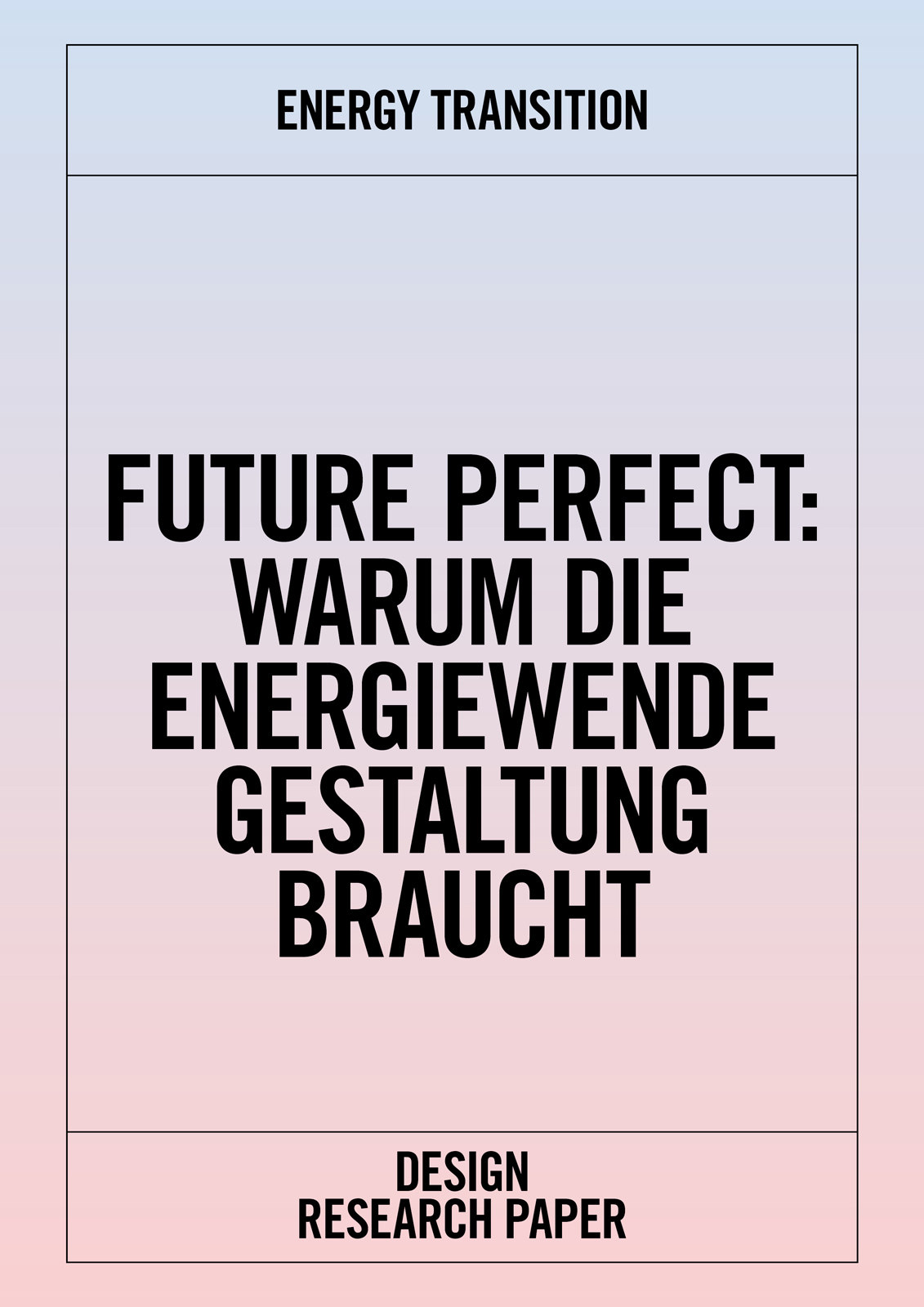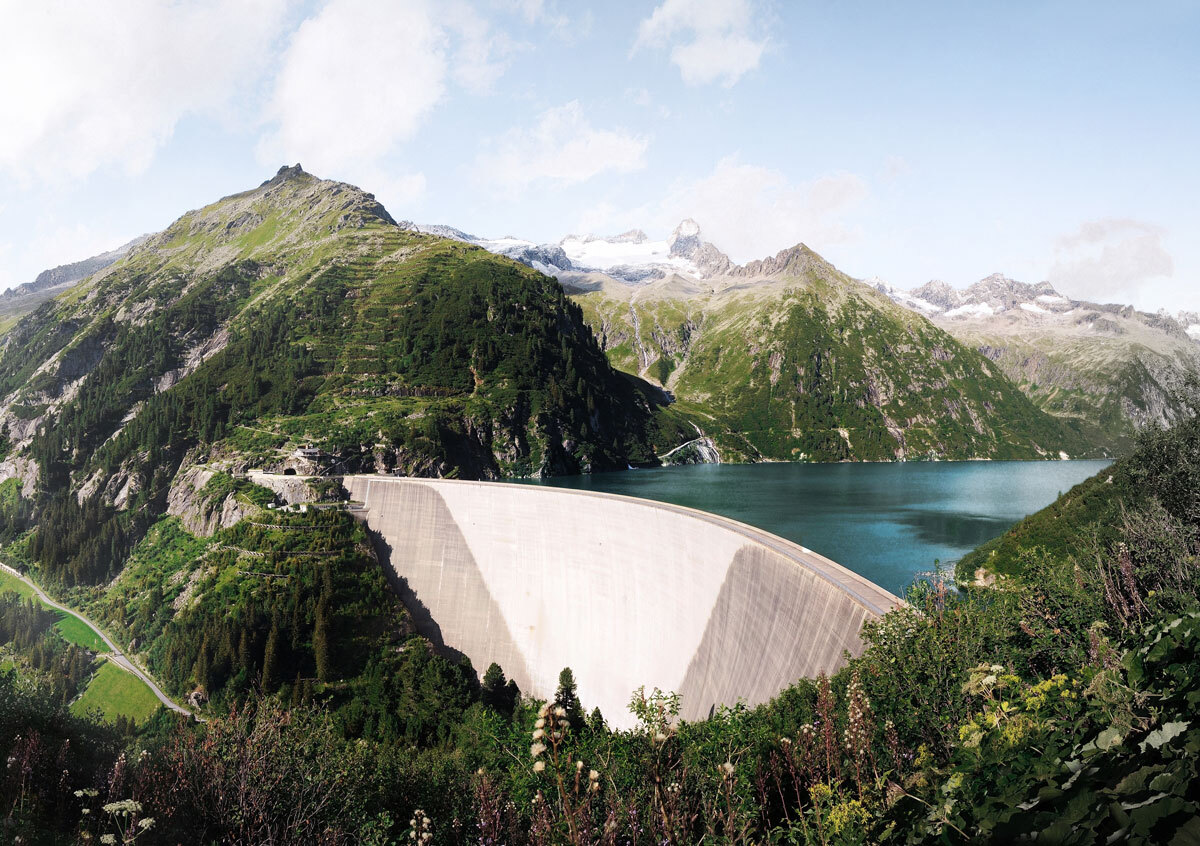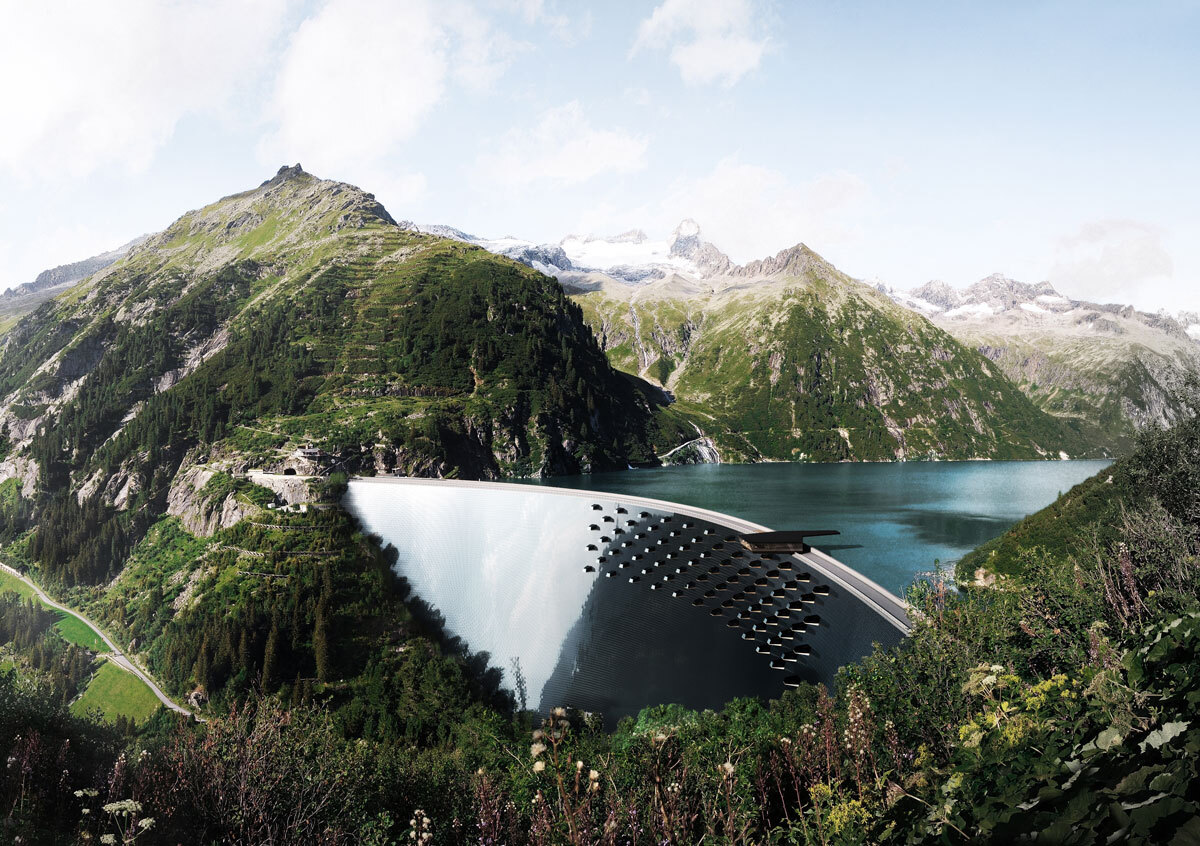- Study
The climate crisis presents us with huge challenges, which we will only meet by radically abandoning the status quo. But it would probably be too simple to merely rely upon technical solutions without simultaneously questioning our lifestyles, working practices and infrastructural requirements.
The same applies to the future development of the built environment and the way in which we deal with natural resources. Individual countries and regions have already defined relatively clear targets for the necessary reduction in CO2 emissions and the parallel improvement in energy efficiency. The principal aim of this study, however, is to highlight the need for a strategy for the design of the upcoming transformation process.
The early involvement of architects, landscape architects and designers, all of whom combine creativity with a rigorous and sensitive approach to such challenges, offers the opportunity to integrate the major projects that will accompany the energy transformation into the cultural landscape with both a sense of responsibility and high aesthetic quality. These projects will also involve the identification of potential additional uses, upon which the public acceptance of the huge associated investments will ultimately depend.
It is against this background that the internationally active Austrian architectural office Delugan Meissl Associated Architects, DMAA for short, has developed five concrete examples as a means of addressing the question of how existing transport infrastructures or man-made landscapes can be transformed into future sources of renewable energy, while also generating both additional uses and aesthetic added value.
This study also takes account of the fact that these upcoming challenges require concrete action on the part of political, economic and social decision-makers, who are largely unprepared for such a task.
The team of experts consists of the founders Elke Delugan-Meissl and Roman Delugan, the partners Dietmar Feistel and Martin Josst, the expert and professor for climate-responsive building Thomas Auer, the experienced energy specialist Ulrike Andres and the design strategist Wolfgang Fiel.
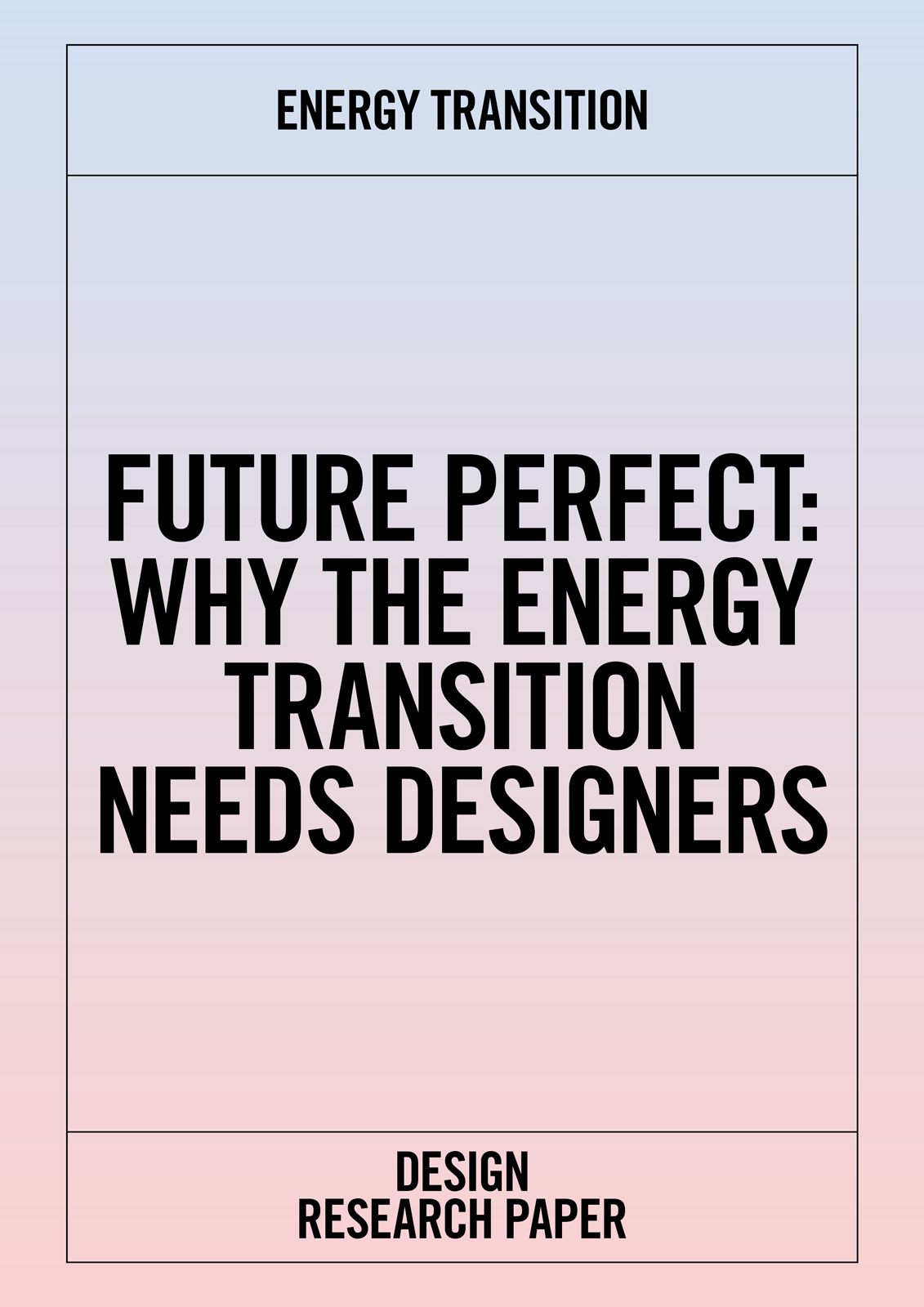
ULRIKE ANDRES is an independent energy expert based in Vienna, who helps her clients to develop innovative and sustainable energy solutions.
THOMAS AUER is managing director of Transsolar and Professor for Building Technology and Climate Responsive Design at the Technical University of Munich
Situation and Outlook
The efforts being made in the fight against global warming have reached unprecedented dimensions. For the first time in history, the USA, China, Japan, the EU and many other industrial nations have formulated concrete measures and ambitious targets. The heralded reduction in greenhouse gas emissions should ensure that much of the industrialised world becomes climate neutral towards the middle of this century, in line with the objective of keeping the increase in global temperature below 2°C.
Vast sums are being made available for the realisation of this so-called energy transition, this shift from fossil sources of energy to a sustainable energy supply based on renewable sources, and most of this money is due to be invested in concrete projects, with much of the rest flowing into research and development. According to various announcements, all new investment projects that form part of the coordinated reconstruction of the economy following the corona pandemic will be strictly monitored vis-à-vis their fulfilment of environmental criteria and their potential contribution to the meeting of climate targets.
However, this wave of investment in new climate protection projects and renewable energies is being accompanied by little public discussion of aesthetic issues, despite the fact that such discussion is urgently needed in projects of this scale, given the interaction between people, society, technology, culture and nature that they inevitably involve.
As a result, colossal pieces of technical infrastructure for the generation of renewable energy such as solar and wind parks are being built right around the world, but the design of these projects tends to pay far too little attention to their impact upon the local population and cultural landscape.
DMAA’s interest in the interaction between architecture and nature and in the broader architectural dimension of technical energy infrastructures is a result of the office’s unwavering focus on the ecological, economic and social sustainability of building.
This interest can be seen in many of the projects that the well-known architects realise around the globe. Such projects often involve far more than the mere implementation of a defined brief or a concrete spatial programme. Besides addressing the physical and formal aspects of buildings, designers, architects and city planners are increasingly taking responsibility for not only the investigation of social and political issues such as neighbourhoods, energy flows, mobility, cultural heritage, identity and urban change, but also the translation of such investigations into concrete projects.
In the process, the main focus is shifting from individual actors or specific objects to an increased sensitivity to questions of relationships and mutual dependencies. Taking account of this change of direction, DMAA’s objective is to enrich the process of the energy transition with the values, interests and priorities of architecture and urban planning through the development of concrete scenarios that address not only technical and functional questions, but also the cultural dimension of this transformation of our cultural landscape.
Over 60% of Austria’s population supports the Federal Government’s aim of ensuring that Austria is climate-neutral by 2040.
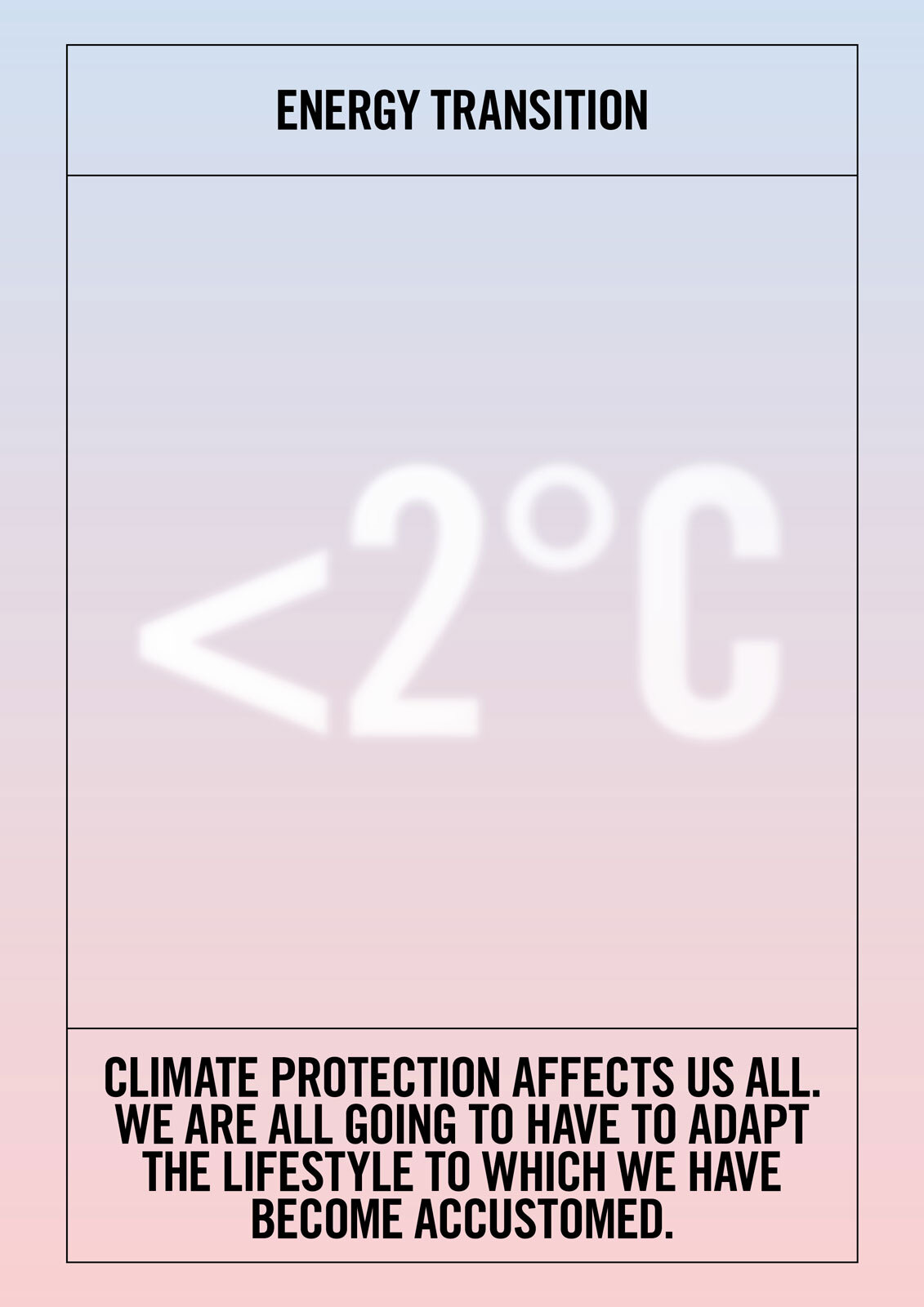
At first glance, the influence of designers on the energy transition appears marginal. However, if we assume that the technical means of reaching climate neutrality already exist, the focus of the concrete implementation must inevitably shift to the related and generally huge interventions in the existing cityscape or the cultural landscape of rural areas.
Against this background, DMAA set itself – together with a team of experts¹ – the task of demonstrating the potential of such a transformation for the development of the designed environment on the basis of five exemplary scenarios, underpinned with concrete facts and figures. The accompanying investigation of the political, economic and social parameters focusses on the current situation in Austria, Germany and Switzerland, but it does this against the background of the general objectives and growing significance of an international debate that has become even more topical in the context of the Covid pandemic.
The Paris Agreement establishes the framework for global efforts to combat climate change, the aim of which is to keep global warming below 2°C, in order to maintain living conditions commensurate with human civilisation. With its European Green Deal, the European Commission affirmed its ambitious climate protection target of making Europe the first climate neutral continent by 2050. Net greenhouse gas emissions should sink to 0 and economic growth and the well-being of society should be based on the efficient use of resources.
In the Climate Target Plan for 2030, the targeted reduction was increased from -40% to -55% and all parts of society were called upon to maximise their climate protection efforts.
At the beginning of May, Germany somewhat surprisingly raised its climate targets. The new aim is that, by 2030, greenhouse gas emissions should be reduced by 65% vis-à-vis their 1990 levels, rather than the previously targeted reduction of 55%. Following the decision of the Constitutional Court that future generations should not be burdened with disproportionately harsh reduction measures in the decades between 2030 and 2050, concrete intermediate targets have now been announced for the years up to 2030.
Switzerland, which has also ratified the Paris Climate Agreement, plans to be climate-neutral by 2050. The forthcoming revisions of the energy and electricity supply law should create the necessary conditions and incentives. The Federal Assembly should vote this year on the revised CO2 law. This proposes new environmental taxes and stricter regulations for buildings and vehicles, the aim of which is to reduce greenhouse gas emissions to half of their 1990 level by 2030, with 75% of these reductions resulting from domestic measures. This will only be possible if renewable energies – and solar energy in particular – are massively expanded.
The Federal Office of Energy (SFOE) plans the realisation of solar PV plant with an installed capacity of 37.5GW by 2050. With an annual production capacity of 34TWh, this represents around 40% of Switzerland’s total electricity consumption. However, according to a study by ETH Lausanne, only just over half of this plant can be accommodated on roofs and façades, and this already represents a ten-fold increase of the current amount.
¹The team of experts consists of the founders Elke Delugan-Meissl and Roman Delugan, the partners Dietmar Feistel and Martin Josst, the expert and professor for climate-responsive building Thomas Auer, the experienced energy specialist Ulrike Andres and the design strategist Wolfgang Fiel.
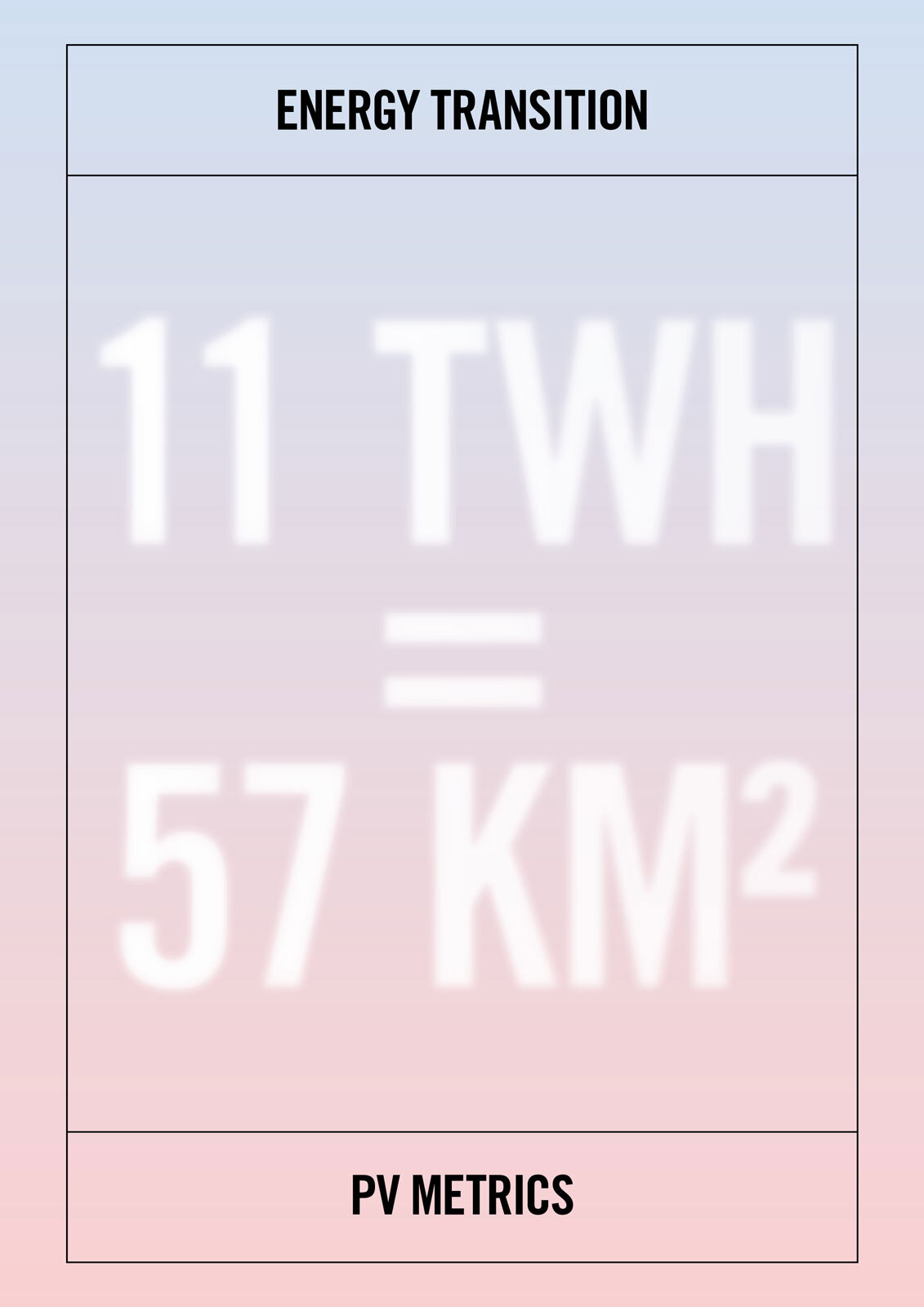
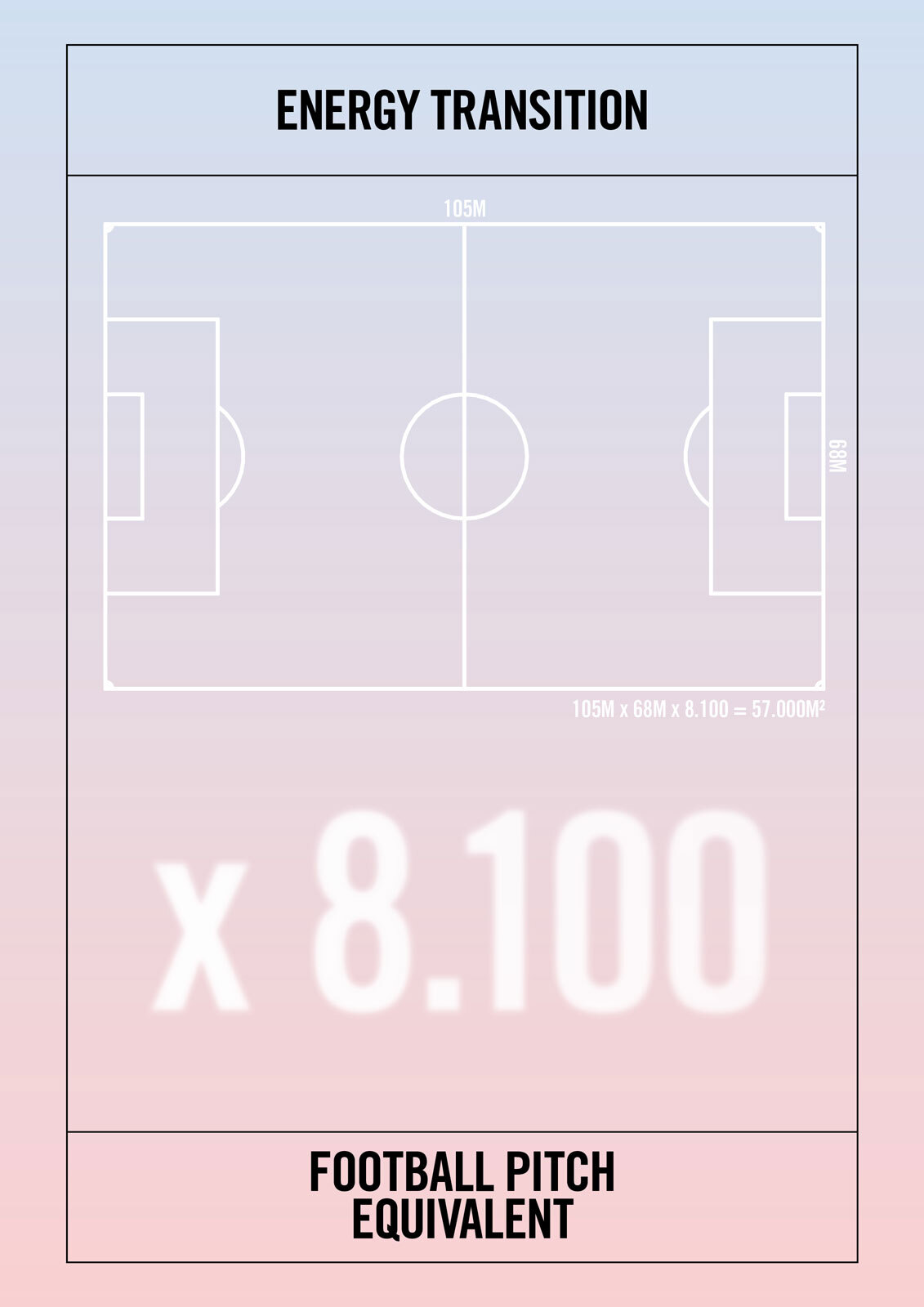
105m x 68m x 8.100 = 57.000m²
-> Text continues after "Design Proposals"
Design proposals
Szenario 1
Dam wall
The Zillergrund is a 20-km-long side valley of the Zillertal in Tyrol. The valley, which is traversed by the upper reaches of the Ziller, is the most easterly of the “innere Gründe”, into which Zillertal divides like a fan close to Mayrhofen. Zillergründl, the uppermost part of the valley, is home to a reservoir of the same name with a length of around 3 km.
The dam wall provides a perfect example of the use of a major element of technical infrastructure as the basis for a large-scale solar PV plant combined with an additional function – in this case, an alternative type of hotel. The rooms that are organised within the loadbearing structure use the infrastructure symbiotically and provide an aesthetically high-quality holiday experience that will truly give the guests goose bumps.
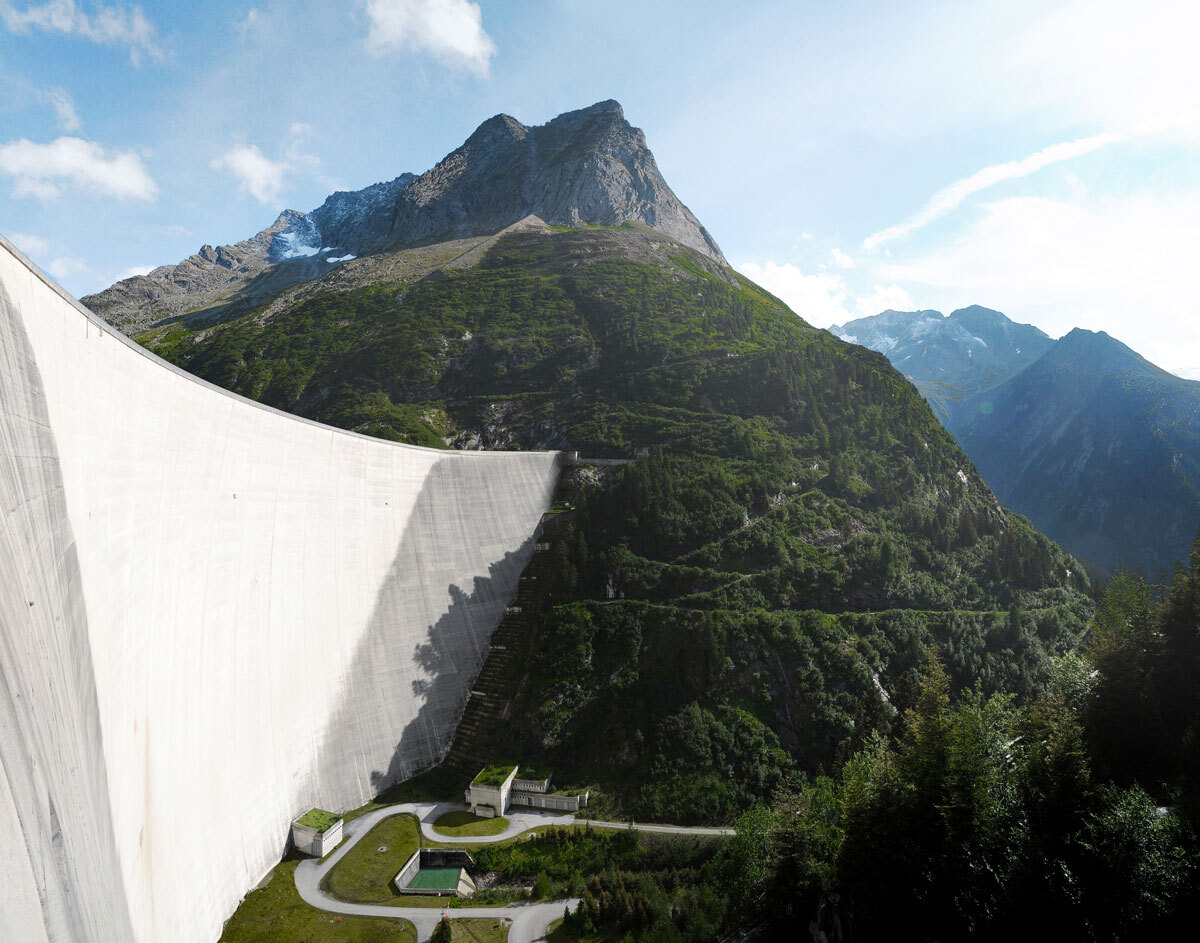
© photographer
Böhringer Friedrich
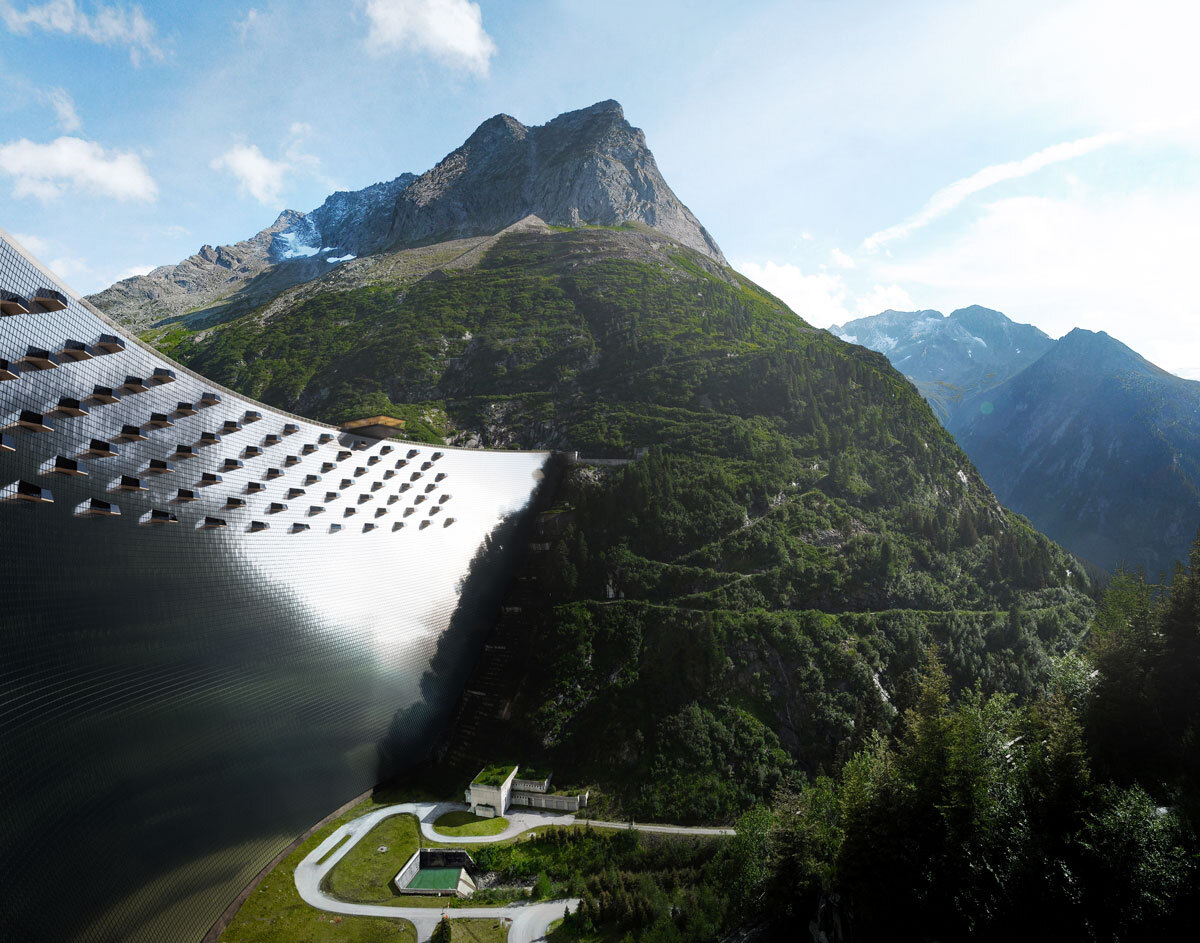
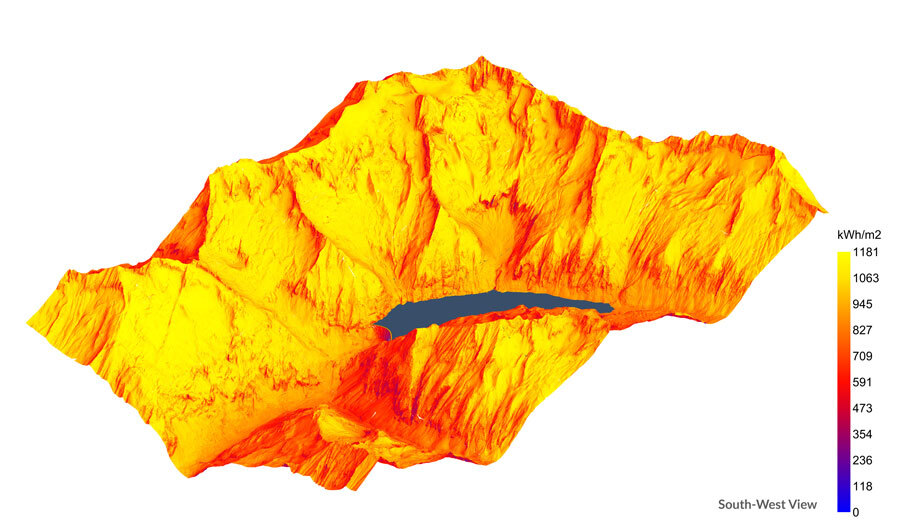
sunlight diagram
(Ata Chokhachian, Climateflux)
The simulation for the dam wall shows a significant level of solar exposure of around 600-800 kWh per m² p.a. The only shadows appear in late afternoon as the mountain ridges to the west begin to hide the sinking sun.
Szenario 2
Motorway
Motorway access roads and exits, junctions and interchanges are surrounded by large residual spaces, which serve a number of technical purposes but are generally unused. And the areas that line motorways and trunk roads that also have to be left undeveloped provide additional potential space for the operation of ground-level PV plant, which, in combination with the surfaces of elements such as noise barriers, can be developed into universal resources for the generation of sustainable electricity.
An additional potential benefit of such areas is the improvement of biodiversity. In light of the debate about changing land use and the related reliance upon artificial fertilisers, this is a further important aspect of a functioning global ecosystem.
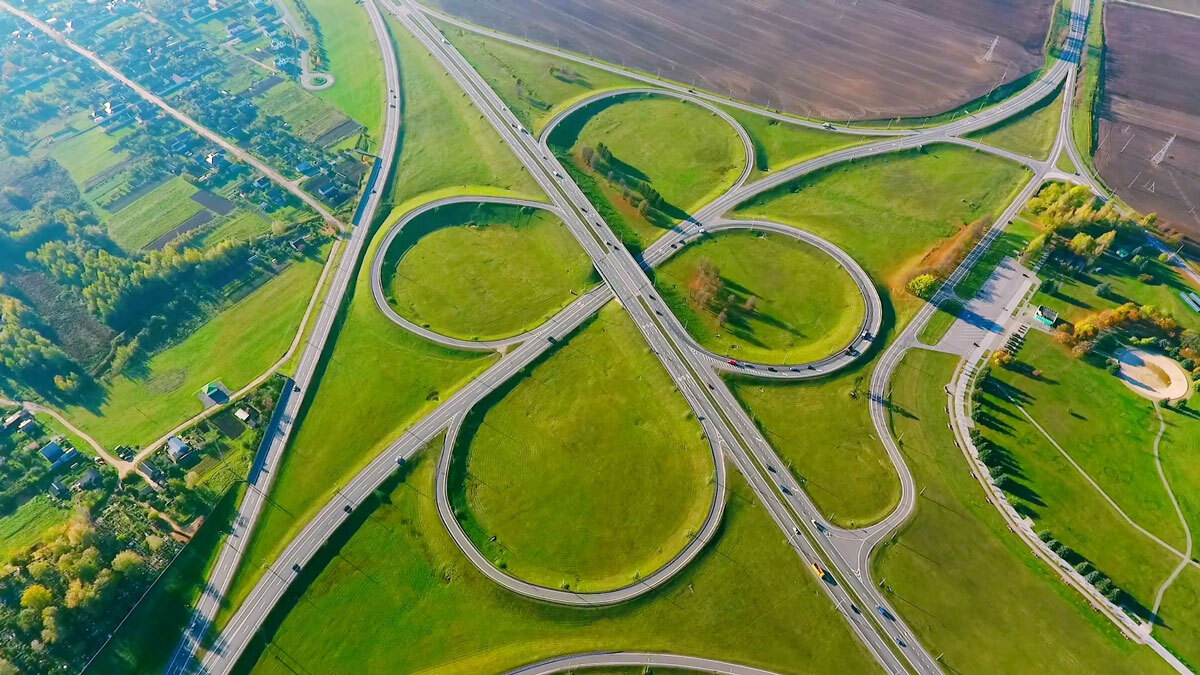
© stockbusters
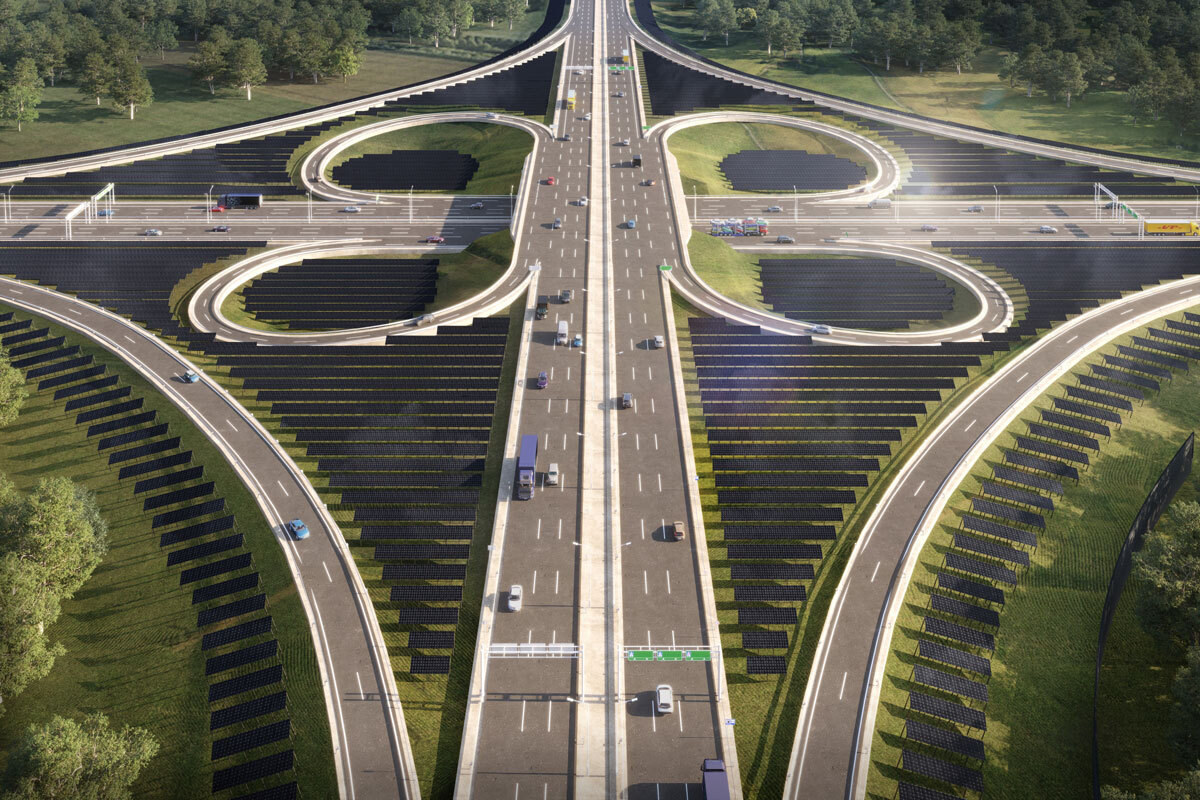
Visualization
© beyond visual arts
Szenario 3
Marshalling yards
The marshalling yards at Vienna-Kledering are Austria’s largest and are located in the 10th District on the south-eastern edge of the city.
These central marshalling yards are situated parallel to the Eastern Railway from Vienna Central Station to Bruck an der Leitha and Budapest and are designed to permit 6,100 waggon movements per day or 300 per hour.
In large built-up areas in particular, such facilities are especially suitable for double or multiple uses, even if, as in this example, the technical complexity and economic cost of the large-scale structure can only be justified if the reuse of such existing open space is tied to special conditions and employed as a political urban planning control instrument. In this concrete example, DMAA proposes to build glasshouses above the tracks, which will generate both solar electricity and an agricultural income.
In addition to this, railway sleepers can also be fitted with PV panels, a solution that has already been tested successfully in Switzerland.
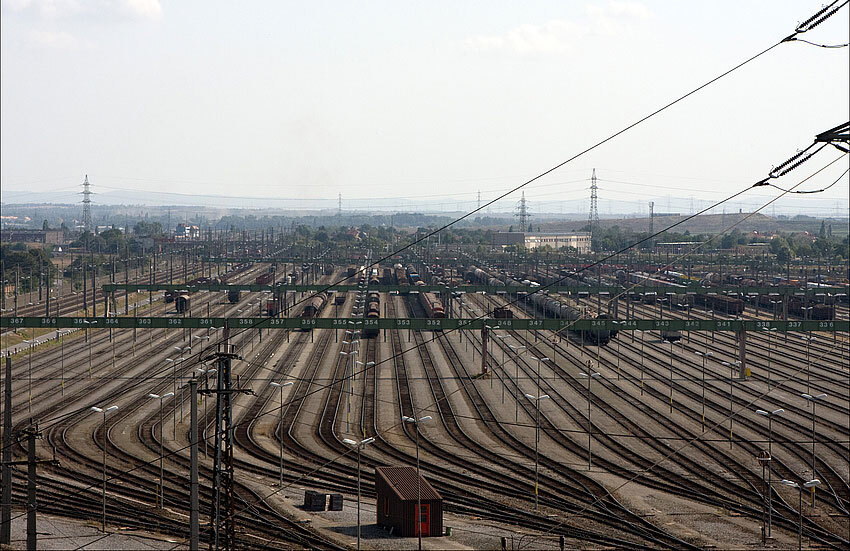
© fotocommunity
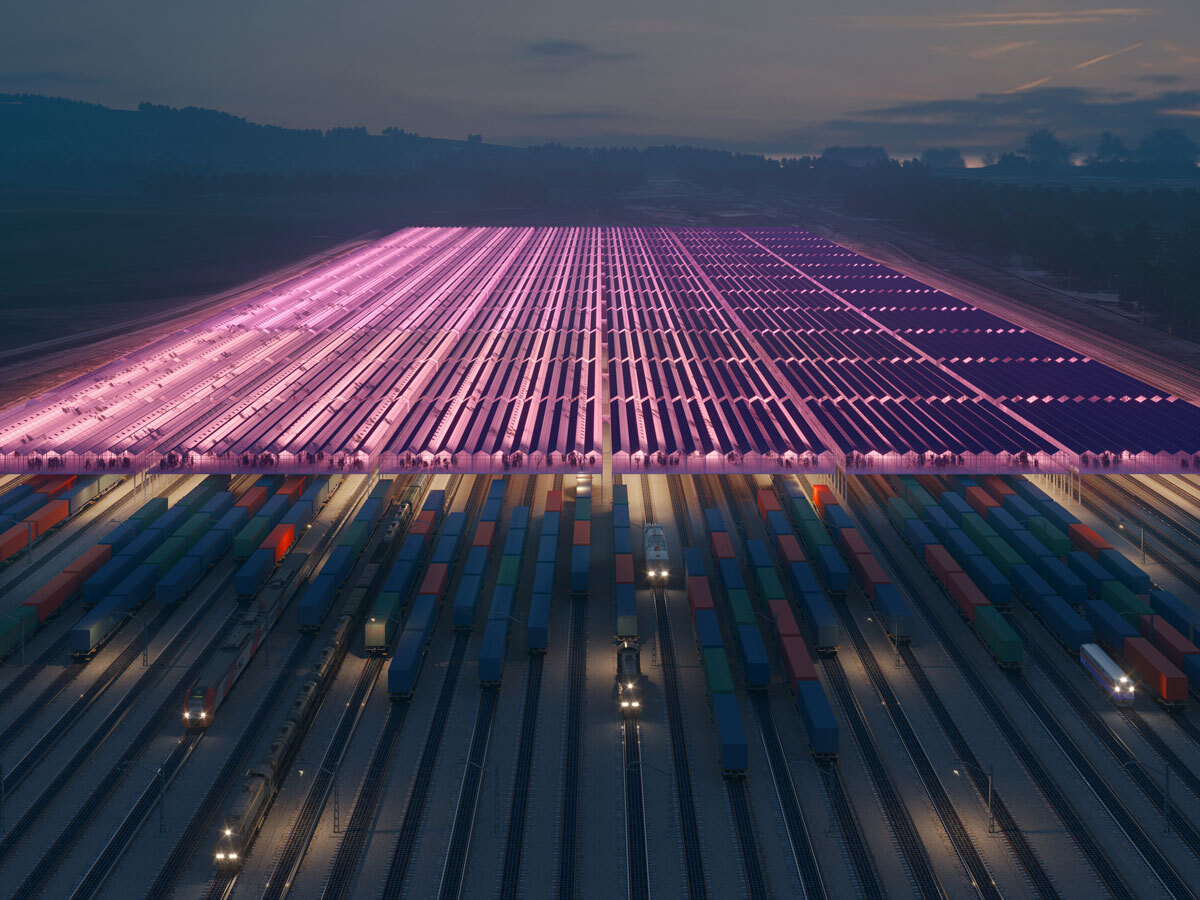
Visualization
© beyond visual arts
Szenario 4
Post-mining landscape
Post-mining landscapes generally embody the large-scale legacy of the mining industry while also strongly shaping the subsequent cultural landscape.
Mining activities at the Erzberg in Styria, the largest open-cast iron ore mine in Central Europe, can be traced back to the 11th century. In addition to the commercial exploitation of the mineral resources that continues to this day, the Erzberg has also established a reputation as a centre for extreme sporting events.
The striking pyramidal form of the Erzberg emerged after 1890, when stepped open-cast mining was introduced. The specific morphology and barren, rocky surface of the more than 30 steps would be ideally suited for development into a solar PV park that, in addition to the already established additional uses, would also facilitate further ways of moving around the mountain such as lifts or adventure slides.
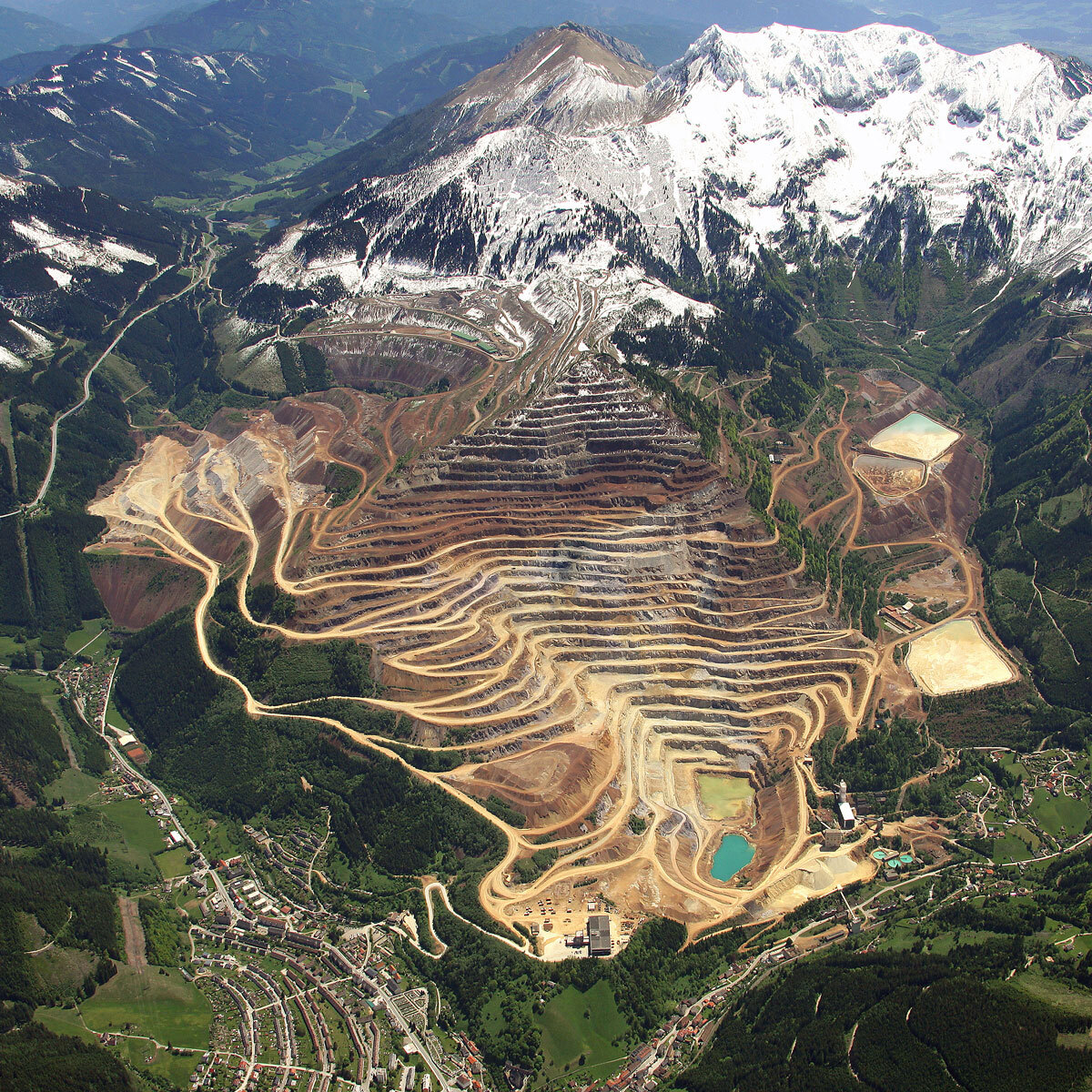
© euroluftbild.de
BAVARIA LUFTBILDVERLAGS GMBH
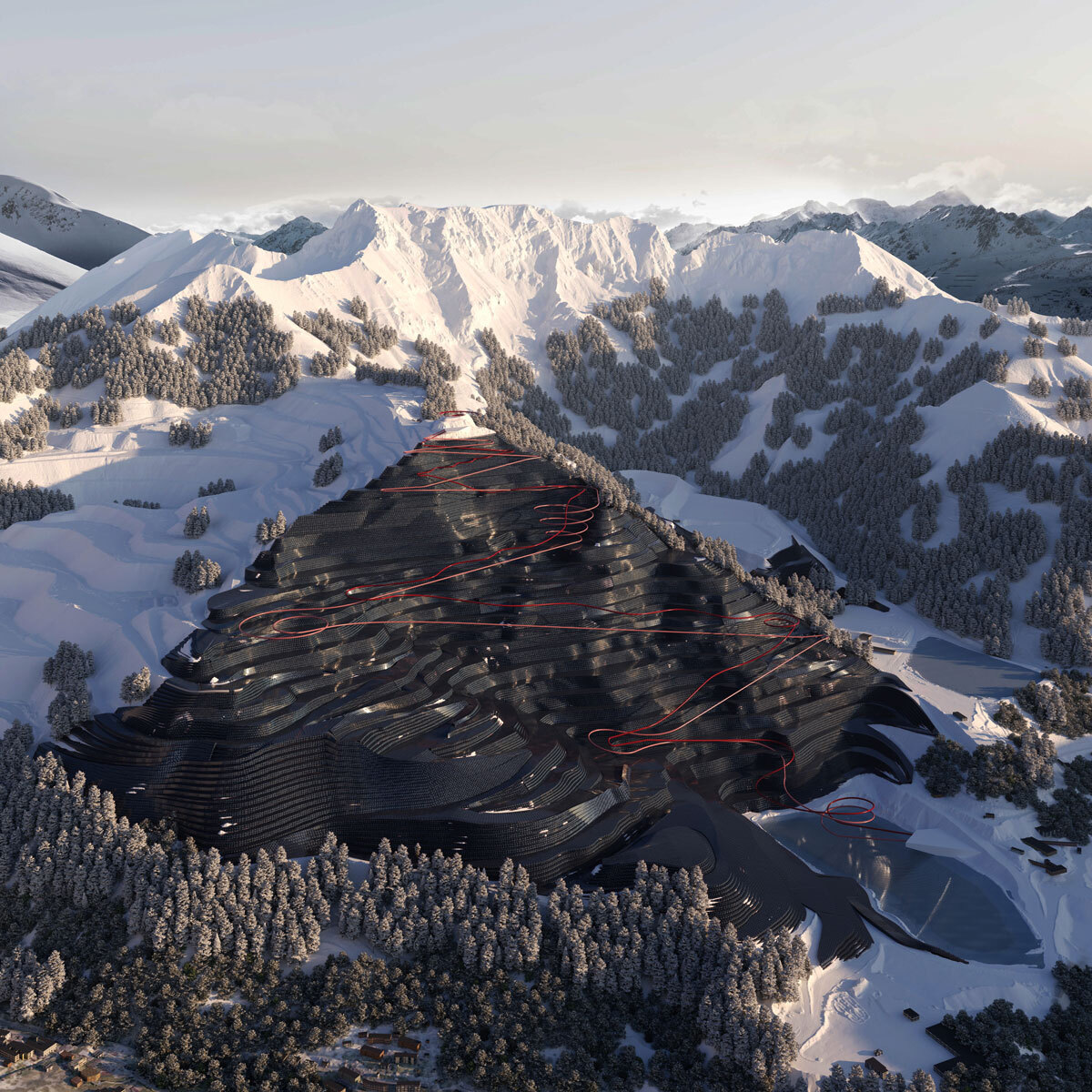
Visualization
© beyond visual arts
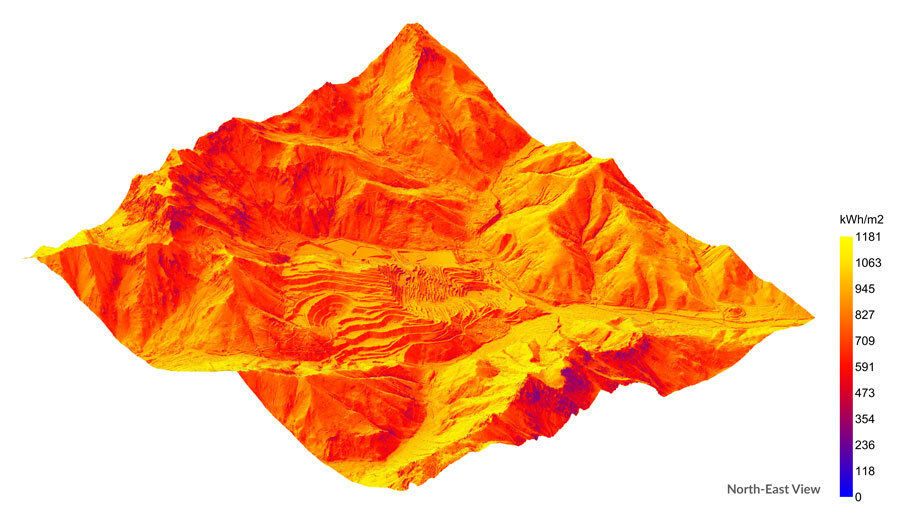
sunlight diagram
(Ata Chokhachian, Climateflux)
The sunlight simulation for the Erzberg shows that it remains shadow-free all day, which makes it ideal as a solar power plant.
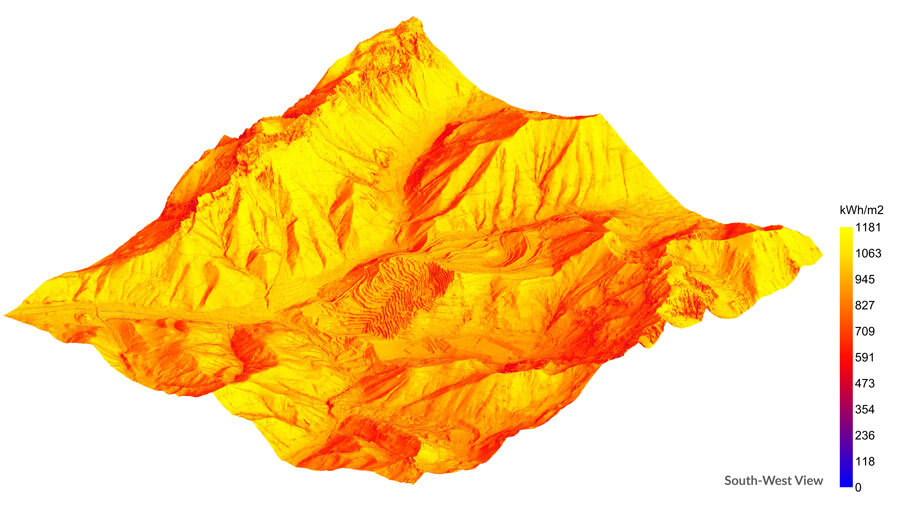
sunlight diagram
South-West View
Szenario 5
Fürstenfeld
Airfield
Airports occupy vast areas that cannot be given any other use. These are generally areas of grass, which are occupied here by raised PV panels that could also offer protection for the development of a rich biodiversity.
The scenario based on the regional airfield at Fürstenfeld shows that with a PV surface of 265.458 m2, 53 GWh of energy can be generated and the average consumption of 32,000 people can be covered.*
*) According to the 2011 census, the municipality of Fürstenfeld has 8,303 inhabitants.
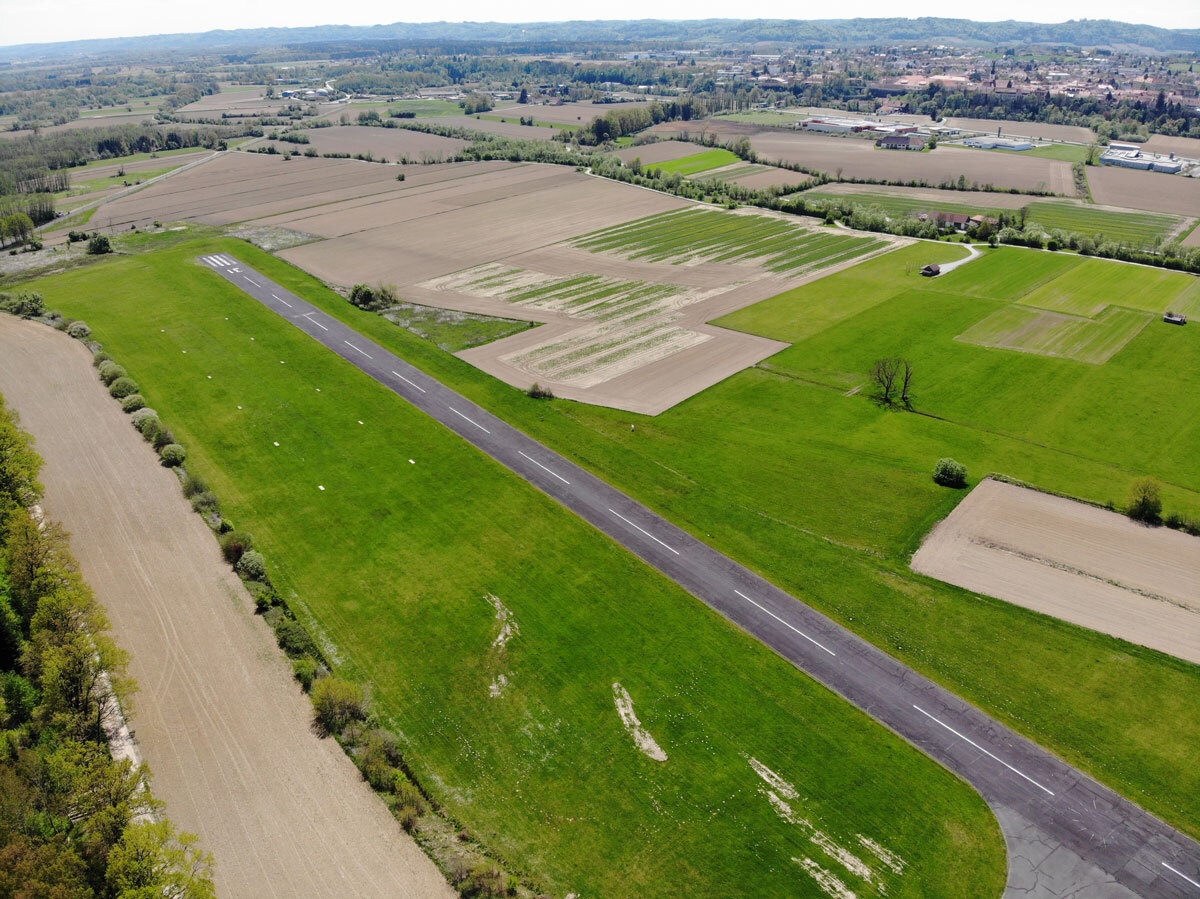
© Stadtgmeinde Fürstenfeld
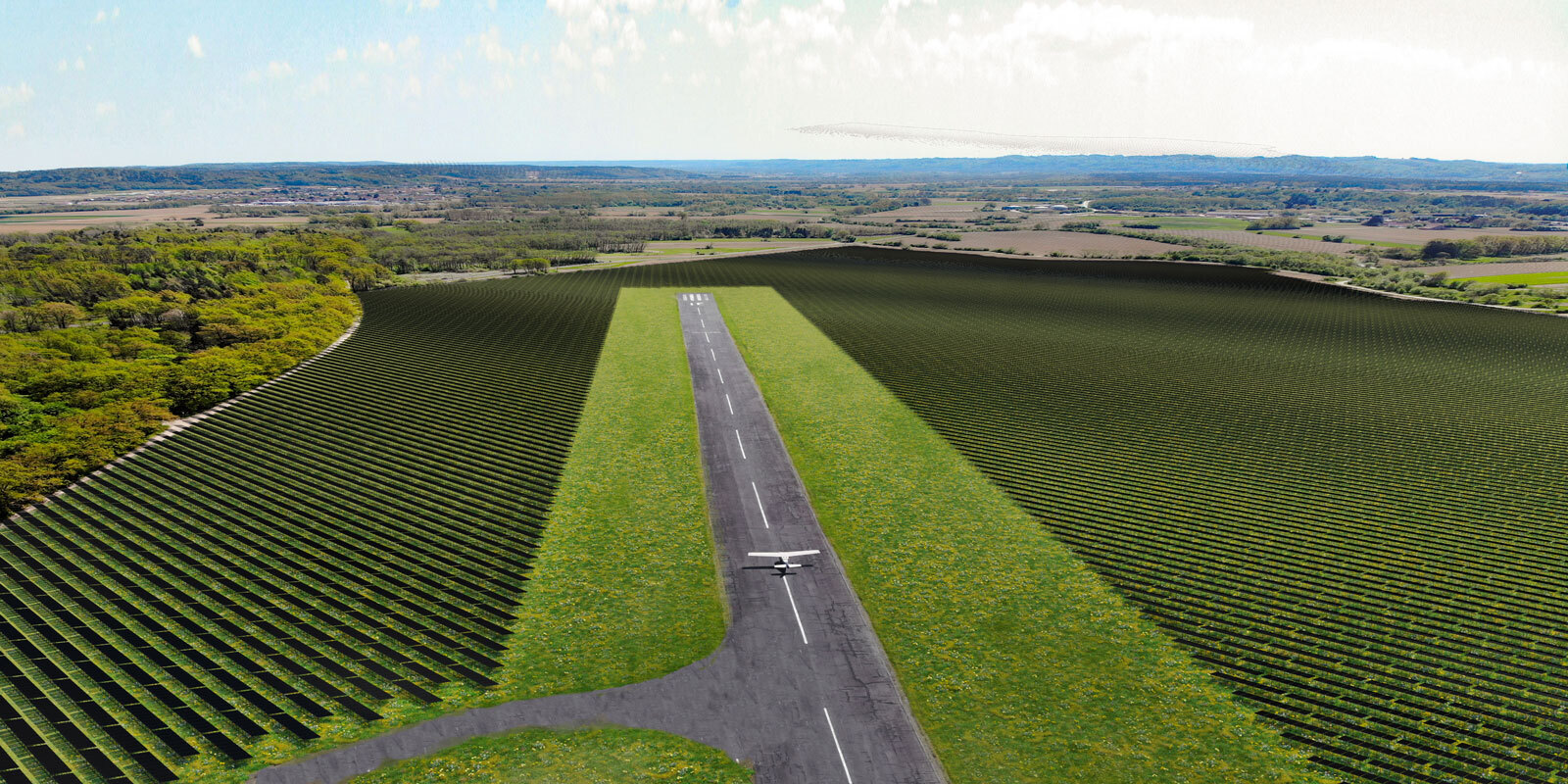
The five scenarios in numbers:
Total solar electricity
production: 650 GWh/a
Hence, the five projects would cover just below 1 % of Austria’s annual electricity consumption.
Reduction in CO2 emissions (based on the Austrian electricity mix of 130 g/kWh): 84,500 t/a
This is the equivalent of 6.76 million trees or an area of 6,760 ha of plantation forest*
*) 80 trees absorb around 1 t CO2 p.a. (based on the beech). Common planting densities range between 400 trees per hectare in an orchard and 1,000 trees per hectare in a plantation forest.
-- > Situation and outlook
Austria’s climate targets and planned measures are set out in the National Energy and Climate Plan (NEKP). This states that 100% of domestic electricity generation should be covered by renewable energy sources by 2030 (today, the figure is already 75%), and that the proportion of Austrian energy consumption represented by renewable energies should rise from 34% to 46-50% over the same period.
Concrete packages of measures and frameworks are being drawn up by the Federal Ministry for Climate Action, Environment, Energy, Mobility, Innovation and Technology (BMK) and will be regulated by the Renewable Energy Expansion Act (EAG). An integrated Austrian Network Infrastructure Plan and measures designed to increase energy efficiency and reduce overall energy consumption are also under development.
Each of Austria’s provincial governments is also developing its own implementation plans and strategies, which will focus on regional characteristics. For example, the expansion of wind energy is primarily an issue in Lower Austria and Burgenland because they have much more potential than the western provinces in this field. Vienna is playing a pioneering role in the development of photovoltaic plants and recently started operations at Austria’s largest solar PV plant (Schafflerhofstraße Green Power Plant in Vienna Donaustadt). Conversely, hydroelectric energy plays a much greater role in Austria’s mountain regions, with their many rivers and other bodies of water, than in the flat regions in the east of the country.
Individual municipalities are having to adapt their land use and zoning plans in line with these ambitious visions and targets, in a process that is being greeted by the affected population with a mixture of approval, disapproval and concern. The role of politicians in persuading those responsible to implement climate protection measures is becoming increasingly important. Here, the Federal Government is dependent upon the provinces, which play the decisive role in the zoning and approval processes.
Pointing to a newly published study by the Energy Agency, the umbrella association Austrian Renewable Energy (EEÖ) warns that the current green energy plans of the provinces are incapable of achieving the overall target of the Federal Government.
In order to be able to generate 100% of electricity from renewable sources by 2030, additional generating capacity of 27TWh must be created over the course of the next nine years. However, the currently documented plans of the provinces only represent a total increase of 10.7TWh. The shortfall in wind and solar energy is 5TWh and 8TWh, respectively, which means that certain provinces must more than double their efforts if Austria is not to miss its targets.
The expansion of hydroelectric power should generate an extra 2.1TWh in Tyrol, 0.9TWh in Salzburg and 0.5TWh in both Carinthia and Vorarlberg. Additional wind energy should be produced in Lower Austria (+4.1TWh), Burgenland (+3.3TWh) and Styria (+1,3TWh). Investments in solar energy are planned in every province.
In Styria, for example, the measures for meeting the climate targets are set out in the Climate and Energy Strategy Styria 2030 (KESS2030). This strategy was agreed in the provincial parliament back in 2018 and is being gradually implemented in a series of three year plans. This province has significant potential in the areas of wind and photovoltaic power as well as geothermal energy.
However, the implementation strategy is still vague and such questions as whether growth rates in the coming years will be linear or exponential and how the concrete scale of the individual sources of energy will be determined in detail leave plenty of room for manoeuvre.


105m x 68m x 8.100 = 57.000m²
In Austria, renewable energies currently represent around 34% of gross end energy consumption, while the other 66%, which is primarily accounted for by mobility, is covered by fossil energies. The following renewable sources of energy are used: hydroelectric power, wind power, photovoltaic, biofuels, heat pumps, renewable district heating and other renewable energies (wood fuels, brine, biogas, solar heat and geothermal energy).
It is estimated that electricity consumption (in Austria) will reach around 80-85TWh by 2030, which requires an expansion in renewable generating capacity of around 20-27 TWh. Around 80% of this increase should be covered by photovoltaic and wind power. In order to achieve this, the coordination of the expansion of the grid has to improve and plants for the production and storage of electricity and gas from renewable sources must be built.
According to a study by Österreichs Energie, new photovoltaic plants with a total estimated capacity of 11TW must be built by 2030, of which only around 50% can be accommodated on the roofs of private houses, apartment blocks and industrial buildings. The rest must be created on undeveloped land. This requires a total area of around 57km², which corresponds to around 0.2% of Austria’s reserves of such undeveloped land.
The use of landfill sites, car parks, technical infrastructure and façades is becoming increasingly compelling. However, this huge expansion of solar PV capacity also necessitates the critical examination and further development of the available technologies and their ecological footprints, including the sustainability of production methods, transport distances and the renewability of the individual elements (circular economy).
In order to be able to reach the target of climate neutrality by 2040, Vienna City Council is planning huge investments in photovoltaic energy. In the medium term, the amount of electricity generated by solar PV plant within the city limits (of Vienna) should be increased to 800 MW by 2030, which will require the construction of additional PV plants with the area of around 100 football pitches in each of the next few years.
Vienna’s strategy is being accompanied by research from institutions such as the University of Natural Resources and Life Sciences. One of the approaches currently being investigated is the combination of green roofs and solar electricity and, more specifically, the question of which varieties of vegetables and herbs grow best below translucent PV film.
Other European cities are also developing new concepts. One particularly interesting example is Helsinki, where a new district heating concept in the form of an island in the bay before the city that combines the production of energy via wind power with other leisure uses was proposed in the context of an international competition.
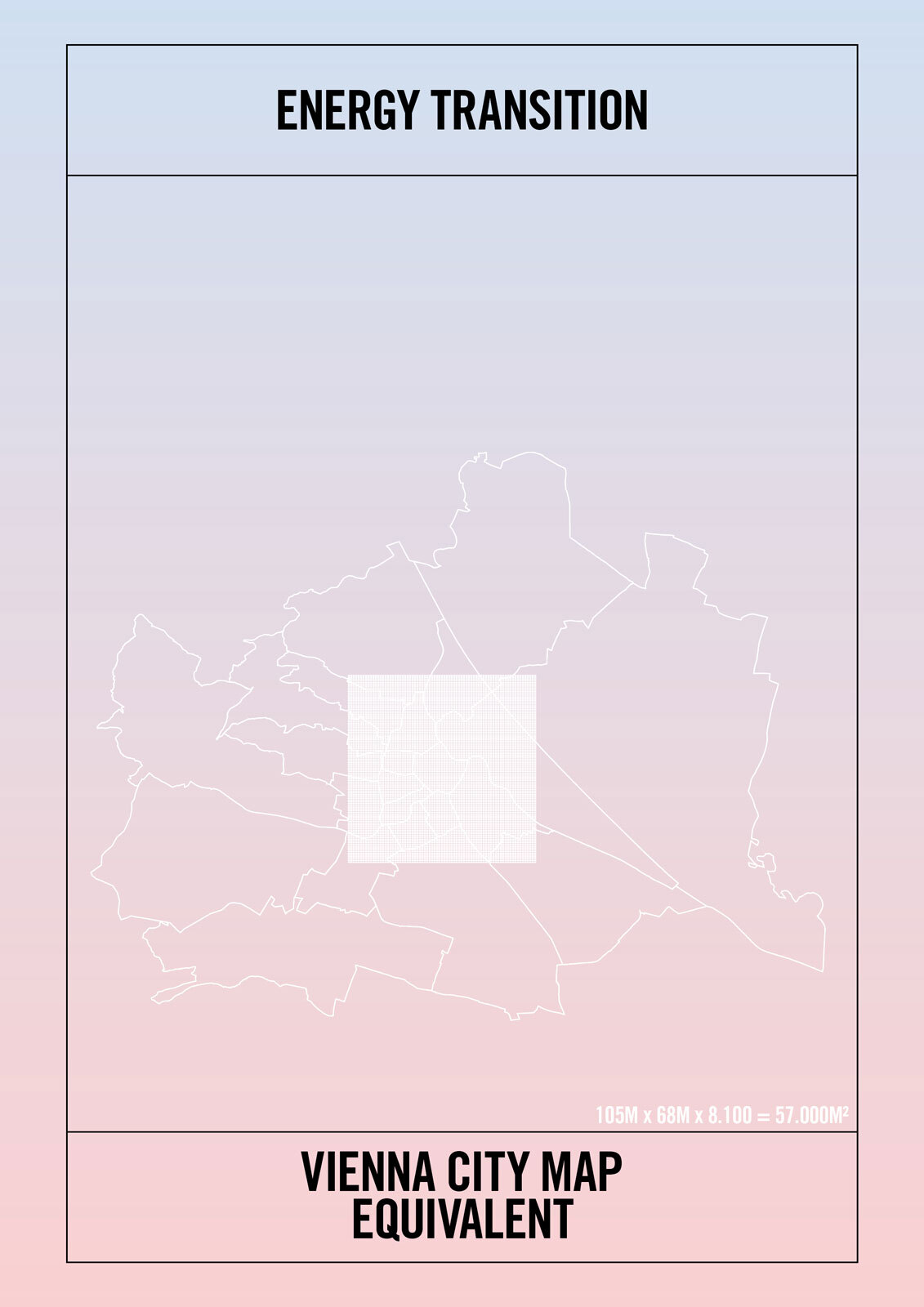
105m x 68m x 8.100 = 57.000m²
While the construction of hydroelectric power stations principally involves the creation of barrages, larger wind or PV power plants are hard to realise without having a significant and large-scale impact on familiar landscapes, a fact that can result in not only resistance from the affected population, but also major design challenges that cannot be reduced to mere technical and operational requirements.
As a result of complex and time-consuming approvals processes and inflexible land-use and urban planning instruments, it is often impossible to adapt these processes to the new challenges with the necessary speed. This problem is ultimately reflected in each individual project, which, in the case of a roof-mounted PV plant, is rarely subject to any design constraints.
The result is a patchwork of widely differing types of panels, colours and fixing solutions, which can seriously detract from the character of a familiar townscape, especially in the context of urban fabric that has developed over centuries. The use of the roofs and parking areas of industrial buildings and supermarkets would certainly cover a proportion of the required area.
But if we want to avoid altering the character of historically developed structures, the assumption that 50% of the area required for PV plant can be accommodated on existing roofs should be critically questioned and, from the design perspective, rejected.
This unavoidably increases the pressure to use alternative technical infrastructure and undeveloped land, which will lead to further changes in the cultural landscape.
This transformation process must be actively shaped with the help of urban planning and architectural resources, in order to prevent the emergence of solutions that do no more than respond to functional and technical requirements.
Despite the scale of this challenge, a recently published study by the University of Klagenfurt, Vienna University of Economics and Business, Deloitte Österreich and Wien Energie reported that a large majority of the population is positively disposed to the construction of new energy plants.
Photovoltaic power is particularly highly regarded, whereas the acceptance of new wind power plants has fallen somewhat in recent years. Photovoltaic plants on open fields in sensitive natural regions are also viewed critically. But over 60% of Austria’s population supports the Federal Government’s aim of ensuring that Austria is climate-neutral by 2040.
The concrete challenges of realising solar PV plants can be summarised as follows:
In order to provide the area that will be required in the near future and to be able to insert these plants into existing built, technical or natural contexts as sensitively and with as much design quality as possible, two basic strategies present themselves: Small-scale distribution across the roofs and façades of buildings and other items of built infrastructure – or large-scale implementation in the form of plants in open spaces or along existing transport infrastructure.
A key premise here is that such plant should offer some functional added value that helps to reduce the expected investment cost pressure and provide additional incentives to private investors.
Excellent opportunities for such double uses include agricultural operations that combine sheep pastures or vegetable fields with large areas of PV panels (agrophotovoltaic operations). The first concrete realisations in this area are highly promising – farmers have been able to generate electricity at levels exceeding 80% of those produced by a comparable monofunctional plant, while the shade provided by the infrastructure has increased agricultural yields by 10% in comparison with the purely agricultural use of the same area.
From the perspective of political, economic and social decision-makers it is important to integrate design expertise into the project development process at any early stage
This can make a decisive difference in a number of areas including those listed below:
• The definition of regional/municipal climate and environmental strategies
• The assessment of energy needs and the drawing up of demand forecasts with reference to the local population and economic structure
• The evaluation of potential sources of support – from local budgets to EU funds – and help in applying for such support
• The organisation of and support in carying out citizens’ meetings, the presentation of projects and plans, the development of communication concepts, etc.
• Quantitative and qualitative surveys of potential additional uses
• (Urban) planning aspects of individual concrete environmental protection measures
• The surveying of potential usable areas and existing structures
• The incorporation of experience, ideas and inputs from projects that have already been successfully implemented in other regions and countries (archives, networks, contacts)
• The optimisation of the planning and design processes, technologies and materials
• Support in the selection of implementation partners, the carrying out of tender processes, meetings (contractors, tradespeople, suppliers, etc.)
• The identification of additional uses and potential partners (agricultural companies, infrastructure and transport companies, tourism operators, beekeepers, etc.)
• The accompaniment of the individual implementation phases and the operational start of the projects
• The incorporation of new projects into existing energy networks, taking into account any potential impact on other – existing or still to be realised – energy generation projects, including in neighbouring areas
• Satisfaction analyses, opinion surveys, documentation of the results
Conclusion
More than ever before, the energy transition is a design and land-use challenge, to which architects and landscape architects and land-use and urban planners must respond. The threat of climate change can only be tackled by new, courageous and creative approaches, and no single part of our society or economy can do this on its own. We require a symbiosis and the coordination of a wide range of human and non-human actors, who must address the technological nature of the age with a variety of approaches and potential solutions.
The individual projects on the path to the energy transition can do more than merely produce sustainable energy. They intervene in the landscape, have the potential to accommodate additional functions and generate positive added values, open up new aspects of the use of existing structures and establish the conditions for the improvement of the design quality of the public realm across a wide range of sectors. As a result, regional needs can be elegantly combined with national and multinational provisions for reaching climate targets.
The process of gaining broad social acceptance for the necessary changes to our landscapes has only just begun. The ecological aspects of the required investments, technologies and transformation processes demand new approaches to product design, manufacturing processes and communication. There is also a need for an integrated approach to the sustainability aspects of the entire production and supply chain and to the lifecycle and operating life of such plant, as well as to the potential recyclability of the individual components and raw materials.
Climate protection affects us all. We are all going to have to adapt the lifestyle to which we have become accustomed.
The cultural sector is also devoting increasing attention to the sustainability of our way of life. In the Vienna Biennale for Change 2021, in which the MAK, the University of Applied Arts, the Kunsthalle and the Architekturzentrum are all participating, an artistic investigation of the energy transformation is being presented in the shape of the concepts “Planet Love” and “Climate Care”.
DMAA’s principal aim in this article is to demonstrate the potential for architecture, together with all its partners in the fields of research and implementation, to make a new, design-based contribution to this social transformation process. Over the course of the coming decades we will approach a climate-neutral future, in which we will increasingly meet our mobility and energy needs from renewable sources that can be integrated into projects notable for the high quality of their design.

Climate protection affects us all.
We are all going to have to adapt the lifestyle to which we have become accustomed.
© OCKERTUNDPARTNER Stuttgart / Transsolar
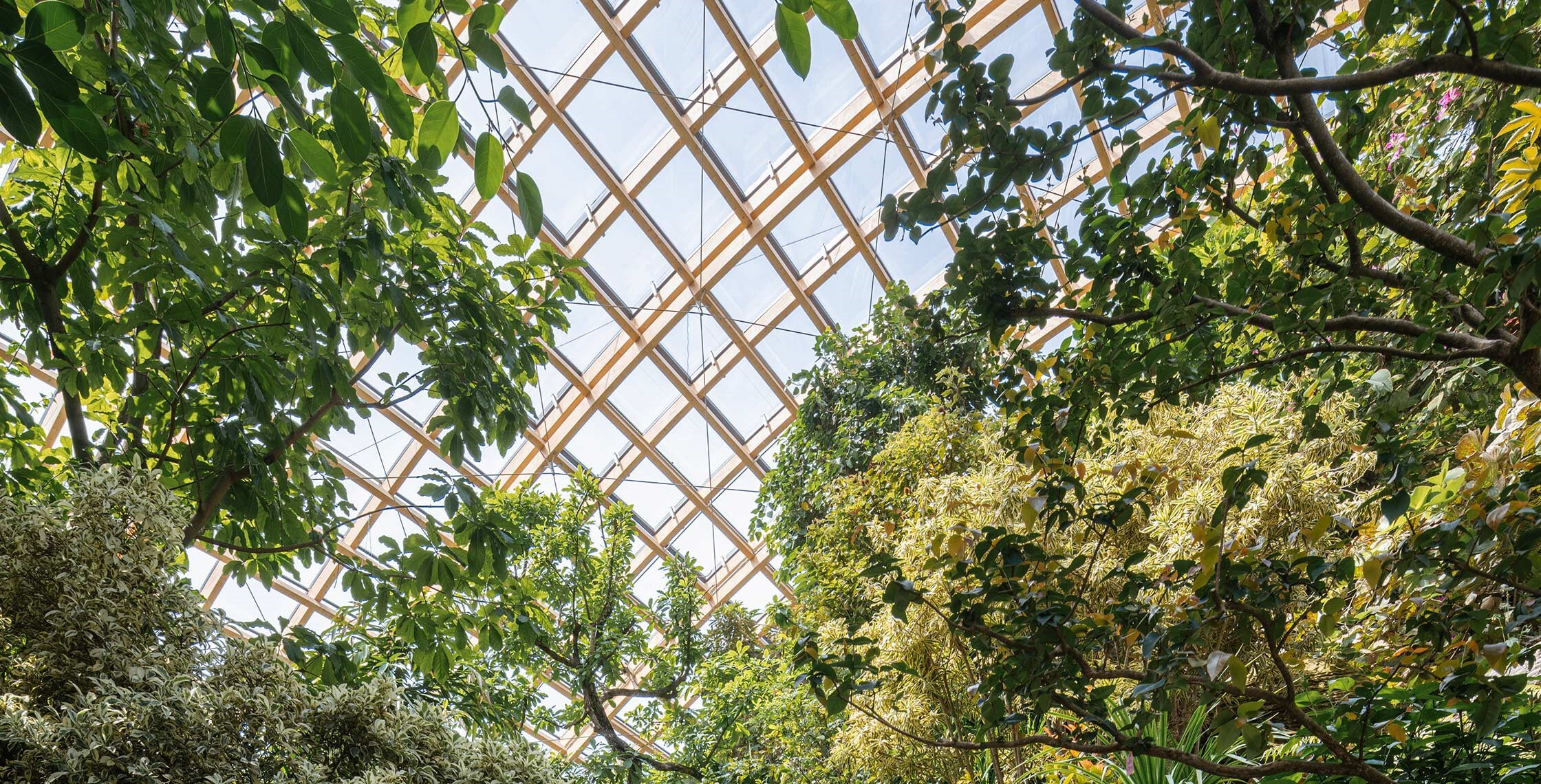
Design Research Paper
DMAA © 2021
FUTURE PERFECT: Warum die Energiewende Gestaltung braucht
FUTURE PERFECT: Why the energy transition needs designers
Design Research Paper, DMAA © 2021
The materials can be used under the copyright for the purpose of advancing the discussion about the wider implications of the energy transition and the particular role of designers.
For press queries, contact Denizhan Fiel at fiel@dmaa.at
External Experts:
THOMAS AUER is managing director of Transsolar and Professor for Building Technology and Climate Responsive Design at the Technical University of Munich since 2014. After its inception nearly 30 years ago, currently Transsolar employs about 60 engineers in 4 offices in Europe and North America. Deploying sophisticated design tools and strategies for climate responsive and energy efficient building design, the company has gained international experience working on a wide range of projects and a variety of topics, such as user comfort, building technology and passive design strategies, as well as strategies for districts and cities.
ULRIKE ANDRES is an independent energy expert based in Vienna, who helps her clients to develop innovative and sustainable energy solutions. She delivers market analysis and entry studies, strategies and business plans, stakeholder and relationship management and CSR/SEI services. She has held top management and board positions in the oil, gas and pipeline sector in various countries (TAL, SHV). She has played a leading role in international infrastructure projects (TAP) and industry associations (President of the European LPG Association) and has served on supervisory boards in the private and public sector (University of Trieste).
WOLFGANG FIEL is managing director at iCP Institute for cultural policy in Vienna and Senior Lecturer at the University of Applied Arts Vienna. He uses the transformative capacity of design to engage with people and communities, fostering their capabilities. He has published and written extensively. Most recent titles include the “Getting Things Done” book-series published by Birkhäuser and “Emancipating the Many: A Practice Led Investigation into Emergent Paradigms of Immediate Political Action” with Cambridge Scholars Publishing, UK, where he is member of the Editorial Advisory Board in the field of Political Theory.

For press inquiries
contact communication@dmaa.at
